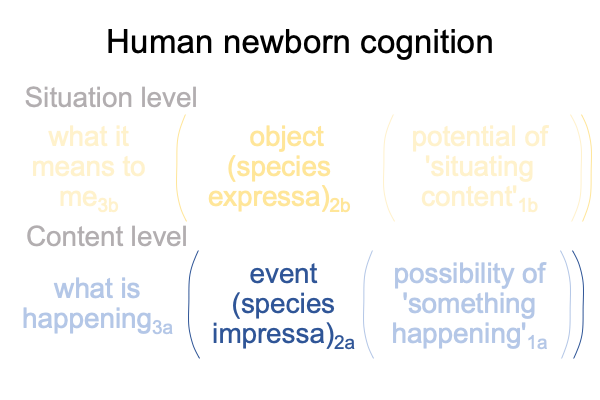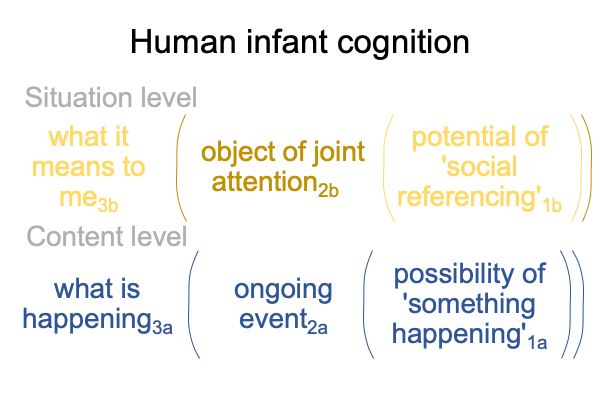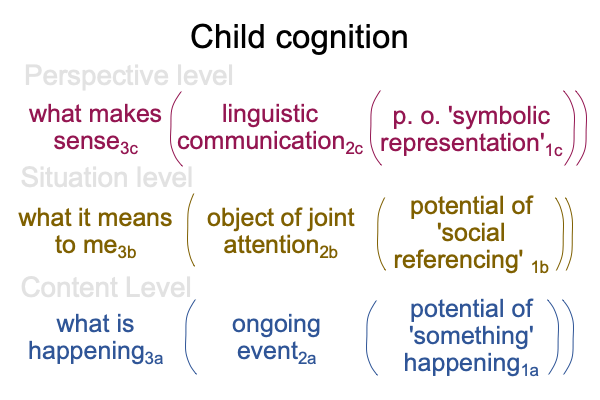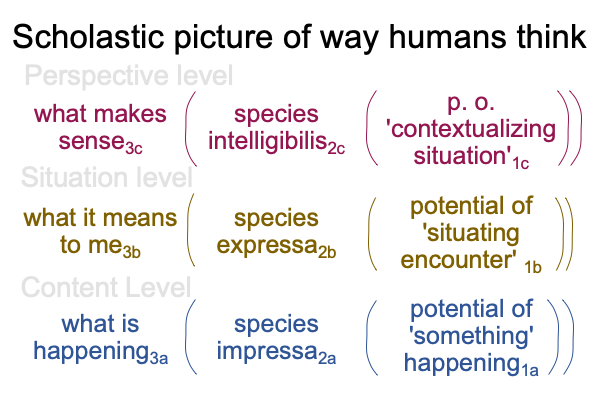0060 So how do newborns and infants cogitate?
Well, they pay attention to events that are going around them.
Prior points 0026 and 0027 apply. The newborn is trying to be sensible. The newborn begins to fill in elements of an innate relational structure that is not articulated by modern scientists, but by medieval scholastics. At the end of the Latin Age, the Baroque scholastic, John Poinsot (1589-1644 AD), formulates the proposition that a sign is a triadic relation. Charles Peirce (1839-1914), two centuries later, makes the same discovery and invents postmodern semiotics.
0061 Of course, neither newborns or Tomasello know this, they only know the events before them. For newborns, events include mom and dad and other siblings and the stuff of everyday life. For Tomasello, the events include scientific inquiries into the behaviors of the great apes and the cognitive abilities of newborns and infants.
0062 Here is a picture of the scholastic two-level interscope for sensible thought. The newborn has impressions, sensations and feelings due to an event. The scholastics call these qualia, “species impressa2a“. This is the only element that is filled in at first. The other elements come into play because this relational structure is phenotypic.

0063 This relation does not require language. It is a precursor to language.
Also, the ongoing event2a is not the event itself. Rather, the ongoing event2a consists of impressions of what is going on at the moment2a.
By the time the tyke is nine months old, slots are filling in quite nicely.
Here is a picture.

0064 With chapter four in mind, I add another layer, where the object of joint attention2b has the potential to be represented symbolically1c (in speech-alone talk) or iconically and indexally1c (in hand and hand-speech talk). The resulting actuality2c is linguistic communication2c (or “language2c“) in the normal context of making sense.
This added layer follows the theme of Tomasello’s argument.

0065 At the same time, the above three-level interscope correlates to a similar diagram developed while reading articles about Latin Age scholastics. Consider two blogs appearing on Razie Mah’s website, Looking at John Deely’s Book (2010) “Semiotic Animal” (appearing in November 2023) and Looking at Daniel Dennett’s Book (2017) “From Bacteria, To Bach, And Back” (appearing in December 2023).
The scholastic picture of the way humans think is diagrammed below.

0066 To me, Tomasello wrestles with the same issues addressed by John Deely and Daniel Dennett. Our lineage adapts into the potential1b of immaterial actualities independent of the adapting species2a. The human niche1b is the potential of triadic relations2a.
